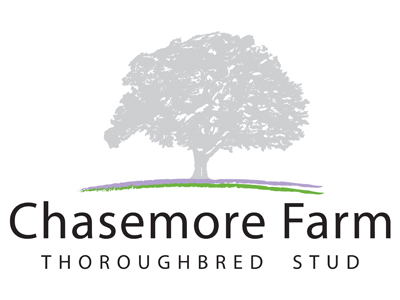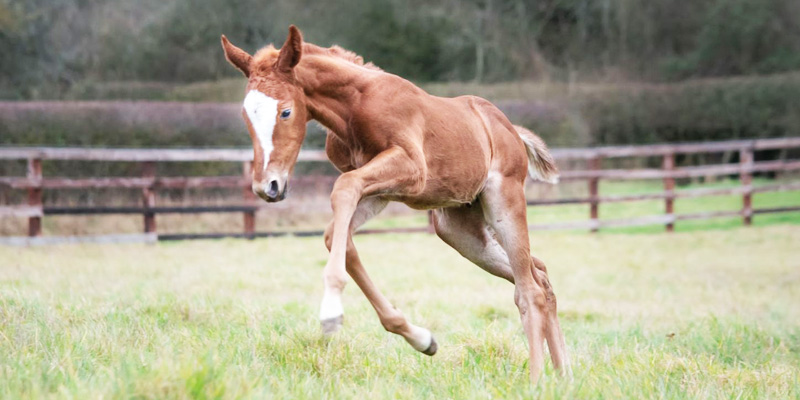Since Pat Sells blew us all away with his explanation of how a length of rope could be used to treat ‘dummy’ foals using the Madigan Squeeze technique, I thought I’d tap him up for some more tales of medical marvels.
I was especially keen to get the inside story on the unusual case of the first foal of Prestige Stakes winner Boomer, who was rejected by her mother at Andrew and Jane Black’s Chasemore Farm – where Pat runs his Orbital Veterinary Services – and fostered by her 22-year-old great-granddam Veiled Beauty, who was retired from broodmare duties last year.
How on earth can it be possible to induce a retired mare of that age to start running milk again? How did the fostering process go after the initial newspaper reports? And is the badly behaved Boomer out of the dog house yet?
Poor old Pat is in one of the busiest times of year for a stud vet, what with it being the middle of breeding season, but fortunately for us he had a quiet night on the foaling front and had time to field a few of those questions.
“Boomer’s filly foal is doing very well indeed,” he reported. “Probably the most important part of fostering is the bonding process, and that couldn’t have gone any better in this case.
“Nutrition is second, because if that doesn’t go entirely to plan there are ways of supplementing. And, really, that aspect hasn’t gone entirely to plan. The mare’s initial response to the medication was encouraging, but frustratingly it didn’t progress a great deal past that.
“The truth is that the drug we use – sulpiride, a dopamine antagonist used to treat schizophrenia in people – has a varied effect in inducing lactation in mares. They have to have established mammary tissue for a start, but even then it won’t necessarily induce full lactation in some mares, and that response is difficult to predict.
“We have a gypsy cob nanny mare named Lassie who responds very well to sulpiride, but she’s a cantankerous cow who takes days of hobbles [a loose tying together of legs to restrict movement], heavy sedation, blindfolding and more before she is safe around a foal, and even then it’s a nerve-wracking affair.
“Veiled Beauty, who was retired last year after her 13th foal, was given a single dose of prostaglandin [a reproductive drug that stimulates maternal instinct shortly after injection in some mares]. She whickered for the foal immediately and accepted it without any restraints. I’ve never seen such an easy bonding; at the risk of sounding sentimental, I think she sensed the filly was her own blood.”
For proof of that bond, see the featured photo of Boomer’s filly foal taken at Chasemore Farm by the stud’s Jess Roberts.
Pat has identified another small downside to using non-thoroughbreds as foster mares, one with a fascinating parallel in the human realm.
“It’s only a minor observation, but I’ve found that foals fostered onto non-thoroughbreds, piebald cobs and such, often get treated differently by their peers,” he said. “Foals can be as cruel as schoolchildren and, just for the fact of having a ‘different’ dam, these orphans can get bullied and left out when the mares and foals join up in bigger groups.”
Nature can be so cruel can’t it? Luckily Pat returned to the matter at hand before I had time to dwell too long on the thought of those poor persecuted foals.
“So Boomer Baby has always received supplementary milk, made from powder, specifically formulated for foal growth,” he continued. “We taught her to drink from a bucket from an early age a) to reduce too much contact with people and b) to make things easier for the staff.
“As well as that she has access to a creep feeder (one that is inaccessible to the mare) from which she can pick at creep feed (a pelleted foal prep) mixed with dry milk powder. Because of this, she also has access to fresh water at foal height, which normal foals don’t need, obviously.”
Pat had more food for thought on an uncomfortable truth behind the process of fostering when it is done on an industrial scale.
“There’s an obvious welfare thread here in the established practice of ‘batty mare’ farms, whereby a bank of pregnant mares will be ready at staggered times through the season,” he said.
“When required, the nanny mare will have her foal removed and is taken to the stud to look after the valuable thoroughbred orphan for a rental fee. Her own orphan is then usually bucket-reared.
“I guess if you drink milk or eat cheese then you probably shouldn’t pass judgement because it’s no different to dairy practice. The sulpiride regime obviates the need for this but, as discussed, it’s too hit and miss for some people – you can go through the laborious bonding process to find that the milk is insufficient, and even when it does work it can take over a week to fully kick in.
“For us, the best-case scenario is to have a mare that you know responds to the drug and is an easy bonder kept on the farm specifically for the purpose.”
And what of Boomer? Is it possible to somehow medicate or train a mare so as she doesn’t reject her foals in future?
“Boomer suffered a bout of mastitis after the incident – a fairly common complication of her milk building up – but she has recovered fine and is now in foal to Pinatubo,” Pat said.
“There are no preventative drugs for the syndrome of rejection. I imagine some farms wouldn’t take the risk and would foster every foal from now on at birth, because there are reports of perennial rejection in some mares.
“These reports are anecdotal, however, so we feel it would be unfair to condemn her for the rest of her breeding career: there’s a fair chance it was a one-off.
“Next spring we’ll watch her with a hawk eye and have a sulpiride-nanny on standby. We have a kind, young, unraced mare with a broken pelvis who we have retired from breeding due to difficulty foaling, in Wilde Ambition. She has a wonderful bag, so we shall monitor her sulpiride response this summer as a possible candidate.”
Sincere thanks to Pat for once again taking the time to talk through some complicated veterinary issues in a way that’s easy to comprehend. If I can understand them, anyone can.
Oh, and in case you thought he was being harsh about Lassie the nanny mare, I can assure you he is speaking from a place of love and respect, as that sometimes “cantankerous cow” is a minor medical miracle herself.
“Lassie is still extremely useful to me as she is a universal blood type – horses having eight major blood types compared with our four,” he said. “I therefore harvest her blood to fill our hyperimmune frozen plasma bank for the newborn foals.”


